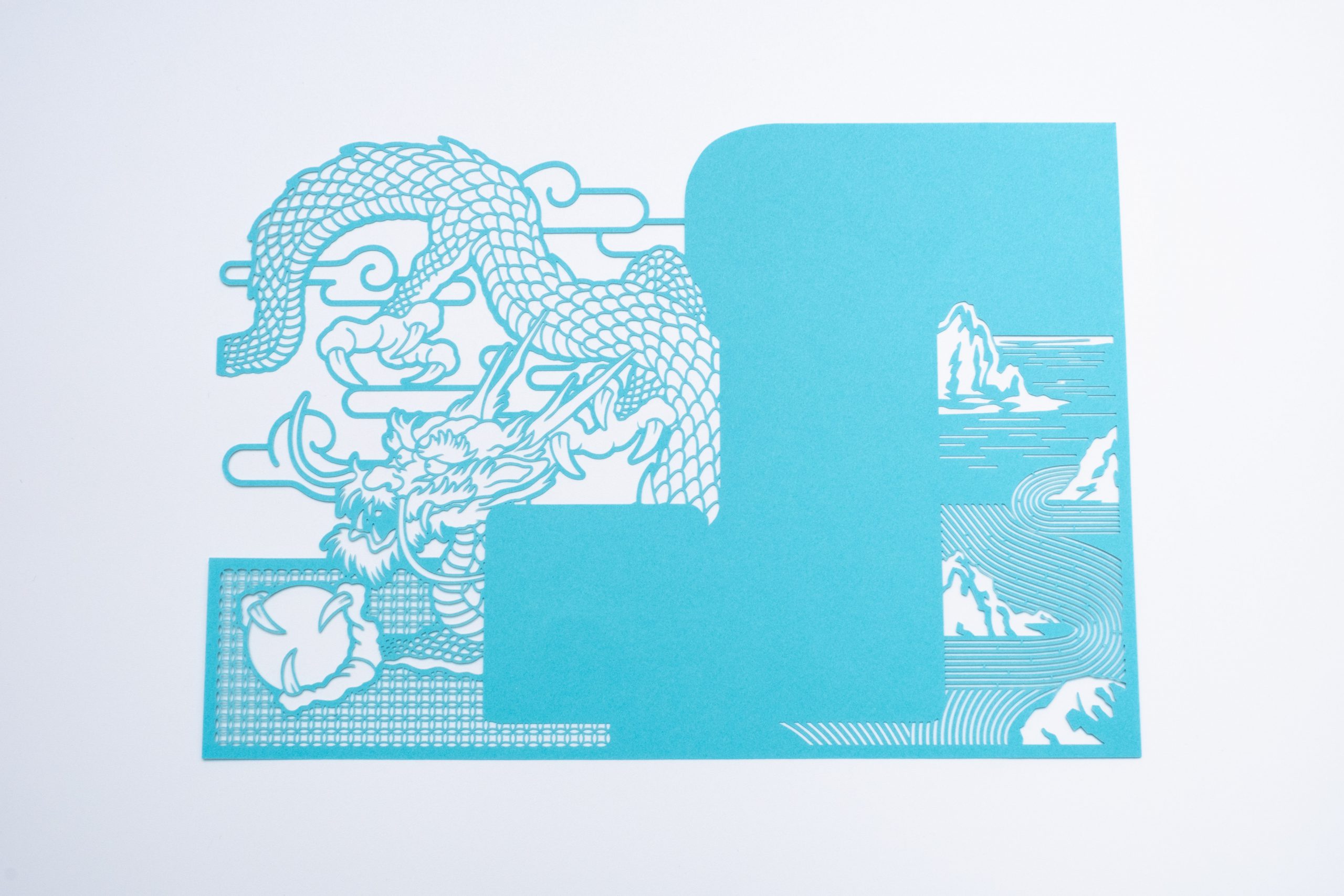
Have you all ever practiced zazen (seated meditation)?
Zazen is a fundamental Zen practice that involves sitting with a straight posture and unifying the mind to empty it, realizing that one’s own mind is Buddha. While Zen temples are often associated with rigorous training, this practice also influences very familiar aspects of daily life.
It is well known that Steve Jobs was interested in Zen. It is said that Jobs was inspired by Zen teachings to make design ‘simple,’ and he reflected this philosophy in Apple products, including the iPhone.
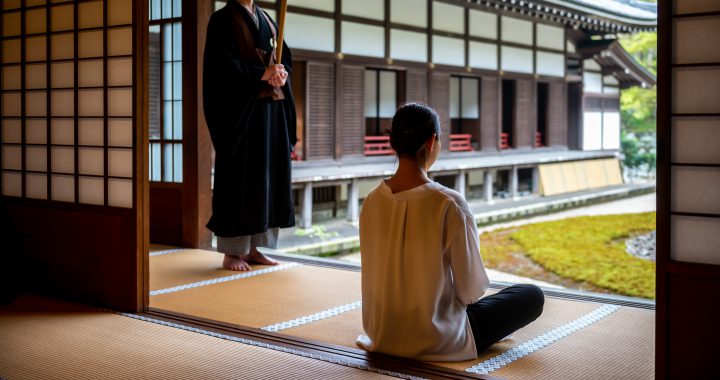
Zen, which actually influences our daily lives, is what we are introducing today through Kankoji Temple, a Zen Buddhist temple. At the main gate of Kankoji, there is a mysterious phrase, ‘Have you tasted the miso?’ Behind this phrase lies a unique story woven into the temple’s long history. In this article, we will explore this mystery, delve into the history of Kankoji, and introduce the beautiful kirie (paper-cutting) temple stamps featuring a powerful dragon and a dry landscape garden, which our company helped to create.
What is Saijo-san Kankoji?
Kankoji, also known as ‘Saijo-san Kankoji,’ is located in Minamiuonuma City, Niigata Prefecture, which is famous for its rice. It is a temple of the Engakuji school of the Rinzai sect, founded in 1410 during the Muromachi period.
1410 is the year when the masterpiece ‘Bashō Yau-zu’ was said to have been painted, and about ten years earlier, Kinkaku-ji Temple was constructed in Kyoto. This shows that Kankoji is a historic temple founded during the zenith of the Zen sect.
Kankoji received the patronage of the Uesugi family, famous for Uesugi Kenshin. However, like the tumultuous history of the Uesugi family, the temple faced many hardships, particularly during the Sengoku period.
Originally, it was a vast temple with well-maintained main buildings, but due to repeated wars, including battles with the Hojo clan and the Otate Rebellion, it fell into decline. This misfortune was compounded by the Uesugi family’s transfer to Yonezawa.
After being rebuilt in its current location in Ueno, Minamiuonuma City during the Edo period, the temple’s fortunes changed dramatically, and it was granted the status of a special head temple with a stipend of 100,000 koku by the shogunate.
However, the hardships faced during that difficult period are related to the origin of the phrase ‘Have you tasted the miso?
Have you tasted the miso at Kankoji Temple?
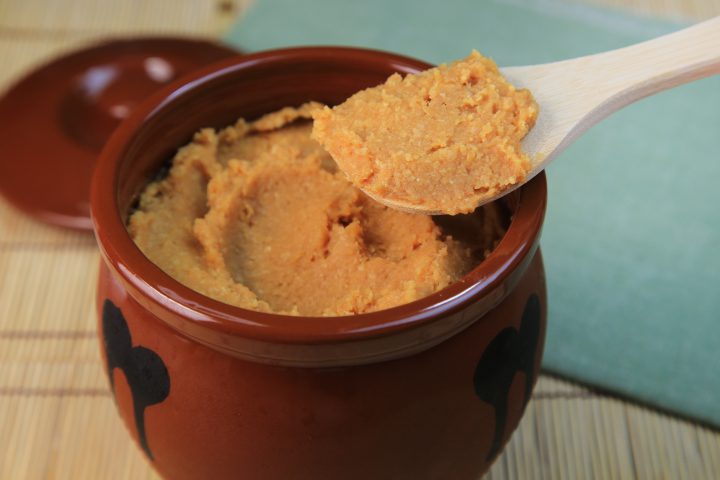
The Otate Rebellion, which occurred over the succession dispute following the death of Uesugi Kenshin, was a large-scale conflict involving surrounding provinces, and Kankoji was not spared from its effects. During the turmoil, the temple was subjected to a massive arson attack and completely burned down. However, thanks to the quick thinking of the abbot at the time, Zen Master Uten Jikan, the 600 volumes of the Daihannya Sutra were saved by burying them in miso barrels.
As a result, the miso from Kankoji became known as the sacred miso that protected the scriptures, and people began to take some miso when visiting the temple to receive its blessings. Thus, the phrase ‘Have you tasted the miso at Kankoji?’ emerged among the people, conveying the sentiment that it would be a shame to visit Kankoji without receiving the miso.
To hold 600 volumes of scriptures, a considerable number of miso barrels would have been needed, but why was there so much miso in the first place?
In fact, as soybean production increased from the Muromachi period, miso became popular among the general populace. Due to its high protein content from plant sources, miso-making became a common practice in Buddhist temples, where vegetarian diets were required. Miso was used as a daily food and also sold as a source of income. Miso was an essential source of nutrients for monks to endure rigorous training.
Paper-cut temple stamp featuring motifs of a dragon and a dry landscape garden
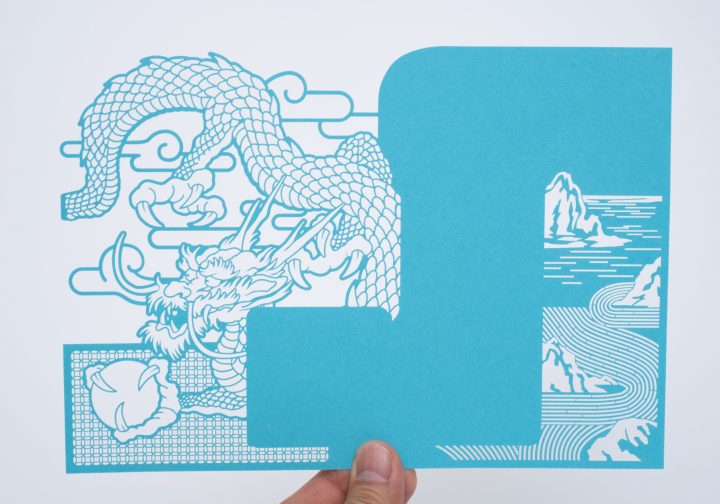
Kankoji has a magnificent main hall built in the Edo period and a dry landscape garden. The dry landscape garden in front of the main hall is called the ‘Garden of the Reclining Dragon.’ The large rock in the center represents a reclining dragon, and the sand patterns around the stone symbolize the flow of water.
The paper-cut temple stamp we created this time reproduces the world of this dry landscape garden. We particularly focused on the ‘flow’ design placed in the lower right corner of the stamp, which is a point we hope you will pay special attention to.
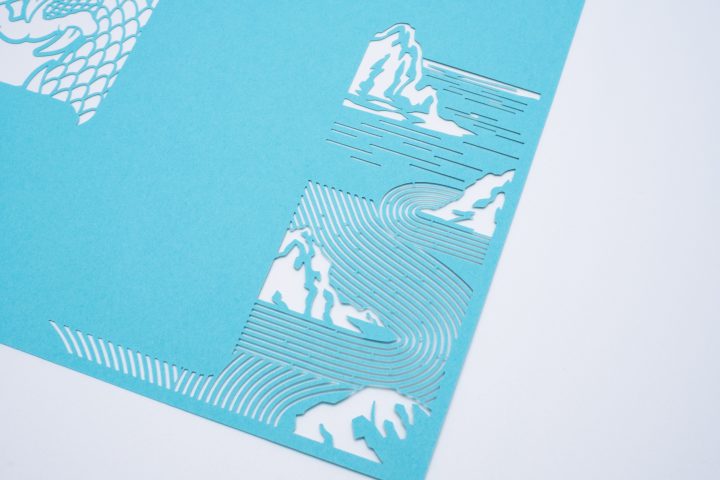
The approach to the main hall features a sanmon gate. Sanmon is short for sangedatsumon, which is a type of gate commonly seen at Buddhist temples. On the ceiling of this sanmon, there is a powerful painting of a cloud dragon, which serves as the dragon motif that stands out prominently in the temple stamp we created this time.
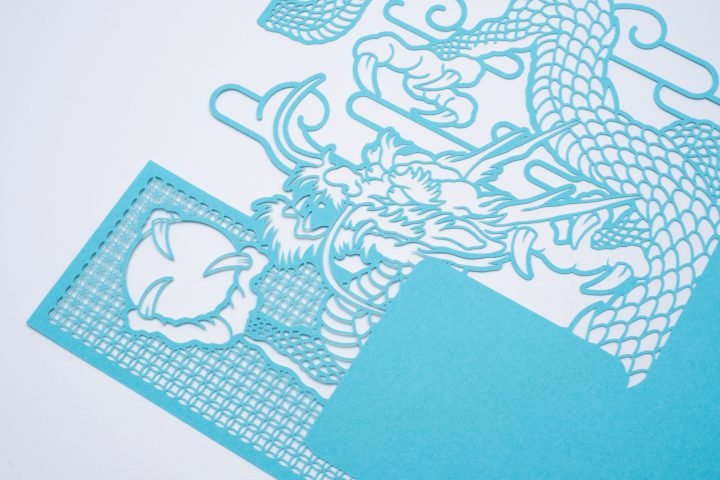
When this temple stamp is distributed, it will be stamped with the words ‘Have you tasted the miso?’ and a cute seal resembling a miso barrel. Please visit the temple in person to get one!
A temple full of highlights
Kankoji is a temple with many highlights. For example, the main gate, built about 300 years ago, was originally the gate of the Shimoda family’s residence, who were retainers of the Sakai family, a fudai daimyo of the Tokugawa clan.
The corridor with transom windows is also known as the ‘Mirror Corridor’ because the layers of lacquer make it shine beautifully like a mirror. Additionally, there are over 20 locations in the corridor with various inlay designs. It can be quite interesting to explore and discover these while touring the temple.
The more you learn about the ancient temple Kankoji, the more you will want to visit it. When you visit the Minamiuonuma area, be sure to stop by. You can also experience sutra copying and zazen (seated meditation), allowing you to calm your mind and distance yourself from everyday stress, or even reflect on Steve Jobs.
